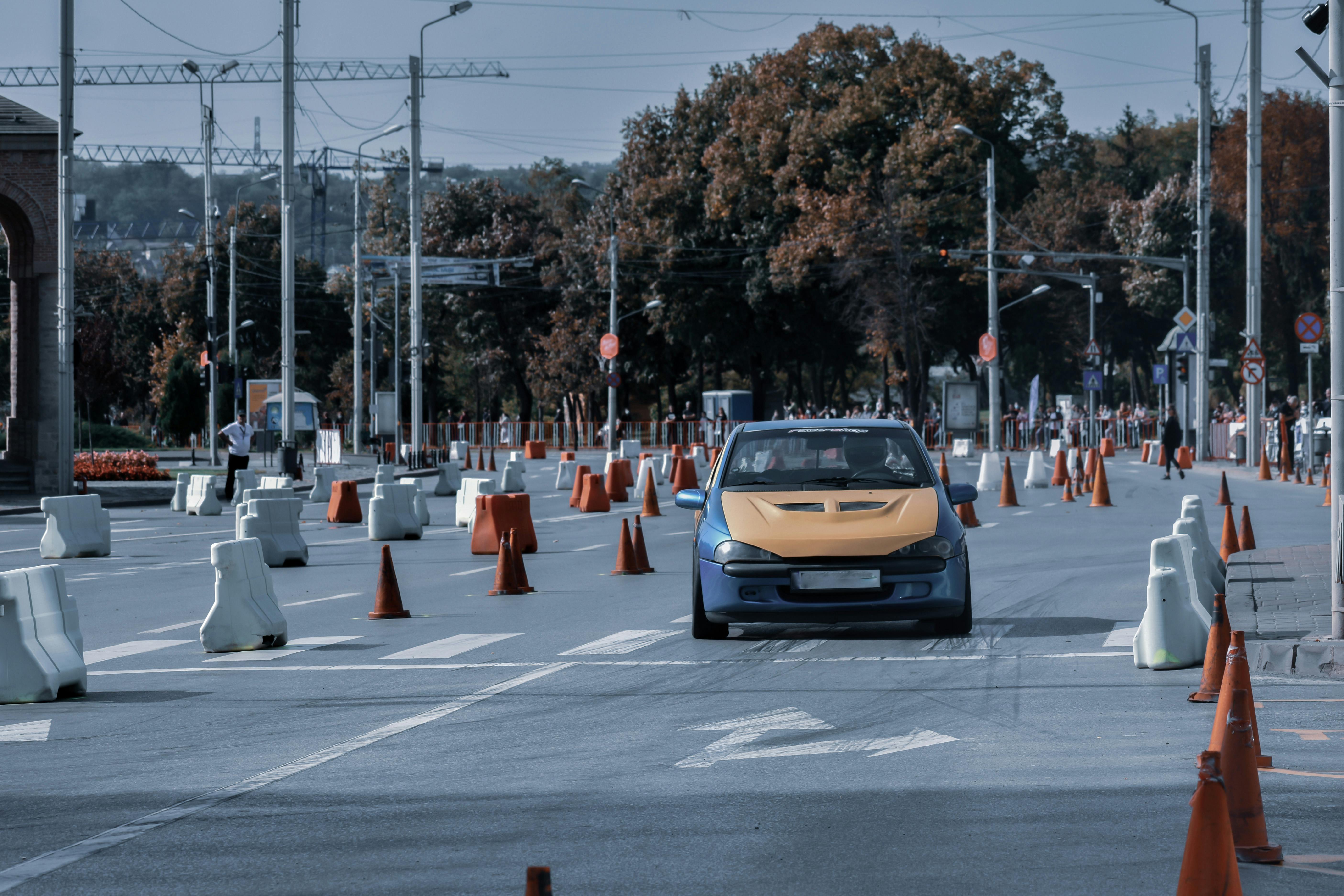
Navigating the Web of Traffic: Unveiling the Benefits and Challenges of OpenAI
Unleashing the Future: How OpenAI Transforms Traffic Management Systems
openai is propelling pioneering advancements in diverse domains, including traffic management systems. With an innovative approach, OpenAI is ushering in a new era of efficient, intelligent, and sustainable traffic management mechanisms.Traditional traffic management systems have long relied on standard methodologies and heuristics to regulate and optimize traffic flow across road networks. However, these traditional approaches often fall short when dealing with ever-evolving real-time situations, unexpected incidents, and complex urban environments.
OpenAI is revolutionizing existing practices by integrating sophisticated AI algorithms into traffic management systems. By leveraging advanced predictive modeling and deep learning techniques, these systems can now provide real-time traffic predictions and efficient solutions to various traffic-related challenges.
One prominent solution OpenAI has introduced is the use of machine learning models for predicting traffic conditions on different road segments. Through extensive data analysis, these models can anticipate congestion patterns, traffic bottlenecks, and potential accidents. Such insights enable traffic managers to take proactive measures in order to ensure smoother traffic flow and minimize congestion.
Moreover, OpenAI systems are tailored to adapt to dynamic scenarios by continuously learning from real-world data. This adaptive approach improves accuracy as these systems evolve over time, incorporating patterns and behavior specific to each location and time of day. By harnessing deep neural networks and reinforcement learning techniques, OpenAI systems can identify optimal signal timings to facilitate improved traffic movement at intersections.
OpenAI's transformative impact extends beyond individual intersections or roads. It addresses the challenges imposed by burgeoning population growth and increasing urbanization by incorporating cooperative optimization strategies. OpenAI-enabled traffic management systems allow synchronization between multiple consecutive traffic signals, coordinating the flow across wider road networks dynamically to enhance overall efficiency levels.
Another significant aspect of OpenAI's approach lies in its commitment towards sustainability. By reducing congestion and minimizing waiting times at intersections, fuel consumption and emissions are substantially decreased. Through this ecological focus, OpenAI traffic management systems contribute to promoting greener transport and a more sustainable future.
Furthermore, OpenAI's continual innovations also foster collaboration and knowledge sharing among cities and traffic management authorities. By generating useful insights and sharing best practices, OpenAI aims to transform traffic management systems worldwide, creating safer, more efficient, and environmentally friendly transportation networks for all.
In summary, OpenAI is leading the way in revolutionizing traffic management systems. By incorporating artificial intelligence, machine learning, and predictive modeling techniques, OpenAI enables real-time prediction of traffic conditions, dynamic optimization of signal timings, and synchronization across road networks. The transformative impact includes enhanced efficiency, reduced congestion, lower emissions, and a sustainable approach towards traffic management. Overall, OpenAI strives to drive positive change for cities globally by unleashing the future of intelligent traffic management systems.

Decoding Efficiency: The Role of OpenAI in Reducing Urban Traffic Congestion
When it comes to urban traffic congestion, it's no secret that finding efficient solutions is crucial. Thankfully, openai, a leading research organization in artificial intelligence, has been actively working on ways to mitigate this pressing issue using their revolutionary technologies.OpenAI harnesses the power of AI to tackle the complex problem of urban traffic congestion. One significant contribution they have made is increasing the decoding efficiency in transportation systems, thereby alleviating traffic congestion hassles.
Decoding efficiency refers to the ability to process and predict various aspects related to traffic flow, route planning, and transportation optimization. By improving these factors with AI-powered algorithms and models, OpenAI enables cities to effectively reduce congestion and enhance overall transportation efficiency.
One of the key advancements brought about by OpenAI's research is their work on real-time traffic prediction systems. By utilizing deep learning techniques like recurrent neural networks, they've developed models that can accurately forecast traffic patterns in specific areas or even entire road networks. This enables city planners and commuters to make informed decisions by taking alternative routes or adjusting travel times in order to avoid congested areas.
Moreover, OpenAI has also focused on optimizing traffic signal control systems. Traditional traffic lights operate on predefined time schedules, which may not be attuned to real-time traffic demands, leading to inefficiencies and bottlenecks. OpenAI's AI-powered algorithms learn from data collected through sensors installed at intersections, adapting signal timing based on actual traffic conditions. These smarter control systems dynamically adjust green/red light intervals in response to current demands, thereby ensuring a more streamlined flow of vehicles throughout the city.
OpenAI's efforts extend beyond real-time monitoring and adaptive signaling; they are also revolutionizing autonomous driving technology. By training their self-driving car models with vast amounts of simulated and real-world driving data, OpenAI aims to achieve safer and more efficient transportation experiences. Autonomous vehicles hold great promise, especially when integrated seamlessly within a well-regulated traffic system. They can optimize routes, coordinate with other vehicles, and respond swiftly to traffic changes, further reducing congestion and improving the overall traffic ecosystem.
Deciphering how to reduce urban traffic congestion is a multifaceted problem, but OpenAI's expertise in AI, machine learning, and deep neural networks have placed them at the forefront of research. By concentrating efforts on decoding efficiency in transportation systems, OpenAI is paving the way for cities to combat congestion effectively and create smarter urban mobility solutions.
In conclusion, with OpenAI's commitment to innovation, their work towards reducing urban traffic congestion holds great potential. By leveraging AI technologies to improve decoding efficiency in various aspects of transportation systems, OpenAI is actively contributing towards a smoother traffic landscape and ultimately enhancing the living experience of millions in congested cities worldwide.
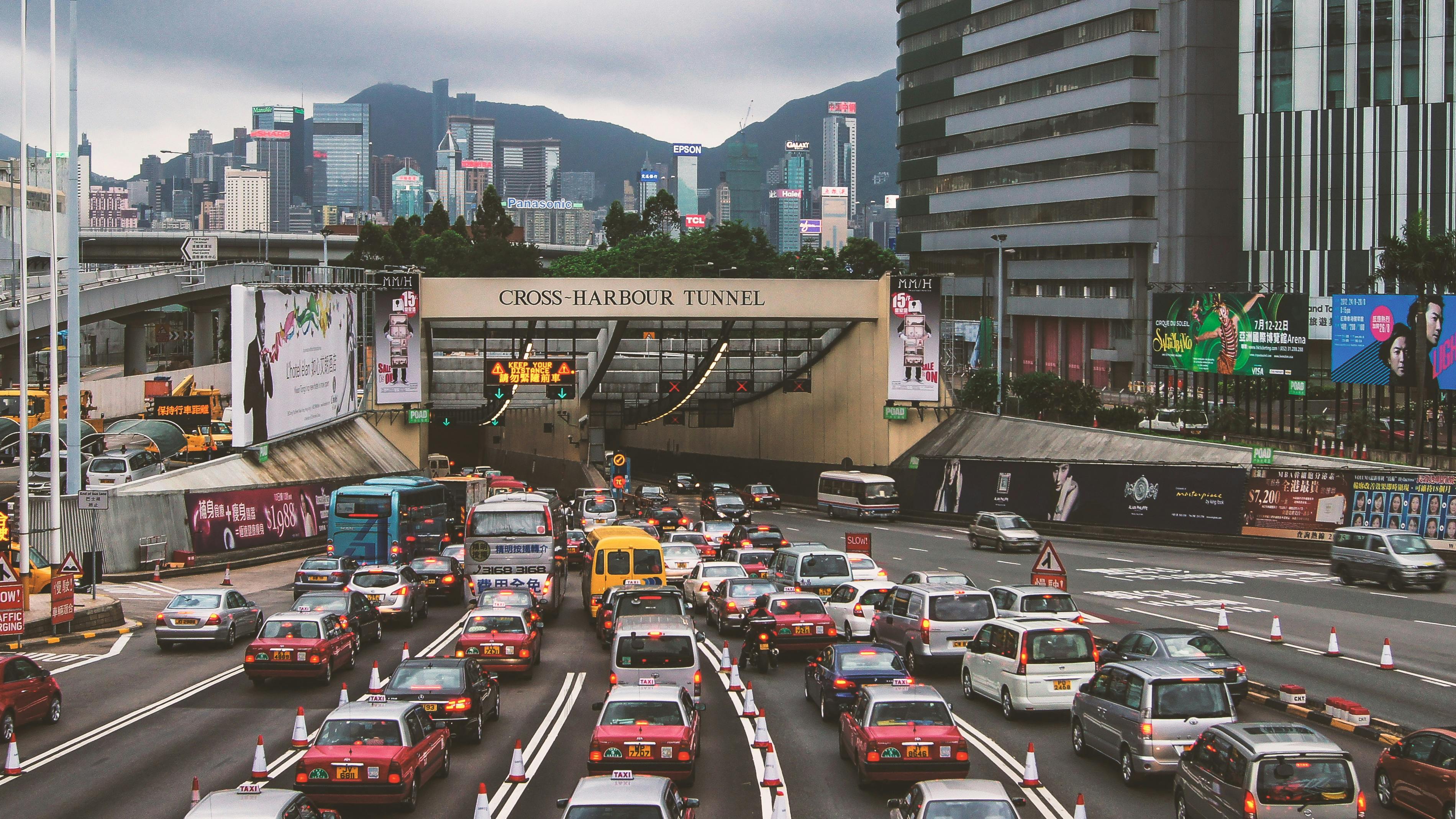
OpenAI and Road Safety: A New Horizon in Accident Prevention Techniques
openai, an artificial intelligence research laboratory, has been making significant strides in various fields and has gained attention for its applications in road safety. With advanced technologies and predictive algorithms, OpenAI has emerged as a leading force in accident prevention techniques on the horizon. Here's a breakdown of what you need to know about OpenAI and road safety.OpenAI's Background:
OpenAI was founded in December 2015 as a nonprofit organization with a mission to ensure that artificial general intelligence (AGI) benefits everyone and has a positive impact on society. They conduct crucial research and work towards building safe and beneficial AI technology.
Road Safety Challenges:
Motor vehicle accidents present a significant concern worldwide, causing fatalities, injuries, economic losses, and emotional distress. Despite numerous advances in automobile safety features, human error remains a major contributing factor to accidents. OpenAI recognizes this problem and aims to mitigate the challenges of road safety through innovative techniques.
Data Analysis:
OpenAI collects vast amounts of real-time data relating to road conditions, driver behavior, traffic patterns, weather conditions, and various other factors affecting road safety. Analyzing this data extensively enables their predictive algorithms to identify potential accident hotspots, anticipated risks based on historical patterns, and even individual driver behavior analysis to predict the likelihood of accidents due to distraction or impaired driving.
Autonomous Vehicles (AVs):
One area where OpenAI plays a significant role in road safety is through its work with Autonomous Vehicles (AVs). By developing highly advanced algorithms and machine learning models, OpenAI improves AVs' ability to understand their surroundings accurately. This enables vehicles to make rapid decisions based on real-time data from sensors and other sources.
Crash Avoidance Systems:
Working closely with automotive manufacturers, OpenAI contributes to the development of advanced crash avoidance systems that can analyze the current traffic situation rapidly. These systems can detect potential collisions and take appropriate measures such as automatic braking or steering interventions to avoid accidents. OpenAI's algorithms continuously evolve to be proactive and adaptive, taking into account real-world scenarios and driver behavior patterns.
Driver Assistance Technology:
OpenAI's research also extends to driver assistance technology, ensuring that systems such as lane departure warnings, adaptive cruise control, and blind-spot monitoring are more precise, accurate, and responsive. These technologies aim to assist drivers in making informed decisions on the road, reducing the chances of human error and preventing accidents.
Collaboration and Ethical Considerations:
OpenAI actively collaborates with other organizations, researchers, regulatory bodies, and industry experts to establish safety standards and ethical frameworks. This collaborative approach ensures that road safety techniques developed by OpenAI align with established guidelines and embrace transparency. They strive to ensure that safety measures implemented using AI do not compromise the privacy or security of individuals.
Future Outlook:
OpenAI's ongoing research shows promising results for further advancements in road safety. As their algorithms continue evolving and gathering more data, the potential for safer roads increases appreciably. With additional collaborations and technology deployment, OpenAI foresees a future where road accidents significantly decrease, minimizing both infrastructure damage and human suffering.
In conclusion, OpenAI has embarked on an essential journey towards revolutionizing road safety by leveraging AI technology. By engaging in extensive data analysis, optimizing autonomous vehicle capabilities, enhancing crash avoidance systems, improving driver assistance technology, prioritizing collaboration and ethical considerations, they contribute significantly to a new horizon in accident prevention techniques. OpenAI's commitment to the betterment of society through transformative AI applications underscores their role in shaping a safer future on our roads.

Navigating Ethical Waters: The Privacy Concerns Surrounding OpenAI in Traffic Control
As technology advances and artificial intelligence takes on a more significant role in our lives, it's essential to consider the ethical implications and privacy concerns that come with it. One particular field where this issue arises is traffic control - specifically, the integration of openai into various transportation systems.OpenAI, a leading AI research organization, has developed advanced algorithms and models that can optimize traffic flow, reduce congestion, and even improve road safety. These systems utilize vast amounts of data collected from sensors, traffic cameras, and other sources to make informed decisions about route planning, signal optimization, and more.
While the integration of OpenAI into traffic control introduces exciting possibilities for improved efficiency and reduced travel times, it also raises concerns about the privacy of individuals on the road. Gathering such extensive data undoubtedly involves capturing sensitive information that identifies individuals, such as license plate numbers or facial recognition data from surveillance cameras.
The primary concern surrounding privacy with OpenAI's implementation involves how this data is collected, stored, and used. With hundreds of cameras capturing detailed information about vehicles and their occupants, there is a potential for abuse or unauthorized access to personal information. Moreover, the very essence of AI algorithms is exemplified through machine learning techniques that require feeding copious amounts of data, which could contain private details. Thus, potential breaches could lead to unintentional exposure of sensitive user-related information.
A related concern is the 24/7 surveillance aspect brought upon by utilizing AI in traffic control. While the primary purpose behind continuous monitoring is to maintain order and ensure road safety, it also raises questions about individual privacy. Citizens might feel uncomfortable knowing that they are constantly being observed and monitored with their movements being logged in a centralized system.
For cities to adopt OpenAI-driven traffic control systems while mitigating these privacy concerns, several measures could be put in place:
- Strong encryption: Implementing robust encryption mechanisms for data transmission and storage can safeguard personal information collected by these systems.
- Data anonymization: To protect individuals' identities, advanced techniques like anonymization and differential privacy should be employed by masking sensitive data or aggregating it in a way that ensures individual identification is impossible.
- Consent and transparency: Public engagement and communication are critical. Involving citizens in the decision-making process, educating them about the system's operations, and seeking their consent can foster trust and ease concerns.
- Strict access controls: Controlling access to data within traffic control organizations plays a vital role in preventing unauthorized use or breaches.
- Legal obligations: Governments and regulatory bodies could mandate stringent privacy regulations to ensure compliance with ethical standards, coupled with penalties for any misconduct or negligence regarding personal data usage.
While OpenAI technology in traffic control holds tremendous potential, it is crucial to prioritize privacy protection as well. Striking a balance between reaping the benefits of AI-driven systems while respecting individuals' privacy rights will enable societies to embrace innovation responsibly.
By actively addressing these ethical concerns, we can build a future where enhanced traffic control incorporates openAI algorithms without compromising the privacy and dignity of individuals on the road.

Integrating OpenAI into Public Transportation: Challenges and Opportunities
The integration of openai technologies into public transportation presents both challenges and opportunities for the industry. Public transportation systems aim to provide efficient and reliable services to meet the needs of millions of passengers. By leveraging the capabilities of OpenAI, these systems can significantly enhance various aspects of their operations.One of the primary challenges is the successful implementation of OpenAI in public transportation. The technology requires accurate modeling and deep learning algorithms to operate effectively. Integration requires extensive testing, validating, and fine-tuning to adapt to the unique characteristics and complexities of public transportation systems. Thus, there is a need for expert knowledge, collaboration, and adequate technical resources to ensure seamless integration.
Policy and regulatory hurdles are another challenge that must be overcome when integrating OpenAI into public transportation. Governments and local authorities may need to revise existing regulations or implement new ones to accommodate AI-driven solutions within transportation networks. Ensuring passenger safety, privacy concerns, data security, and liability management are among the critical issues that require careful consideration during integration.
Despite these challenges, integrating OpenAI into public transportation offers numerous benefits and opportunities. Improved route optimization techniques enable enhanced efficiency in terms of fuel consumption and travel time. OpenAI models excel at analyzing large datasets to identify patterns and optimize complex transportation networks dynamically. This leads to optimized service schedules, reduced wait times, efficient resource allocation, and ultimately better transport experiences for passengers.
OpenAI also opens doors for smart traffic management by leveraging real-time data from various sources like sensors, surveillance systems, or smartphone applications. These AI-powered systems can provide accurate traffic predictions, detect anomalies or congestion hotspots promptly, and recommend alternative routes for smoother traffic flow. This contributes to minimizing overcrowding in vehicles and stations while maximizing efficiency across the entire network.
Another opportunity lies in providing tailored passenger experiences through intelligent virtual assistants powered by OpenAI algorithms. These assistants can assist passengers with real-time information on routes, transfers, delays, disruptions, and more. By utilizing conversational interfaces, travelers can receive personalized recommendations based on preferences, accessibility needs, or real-time conditions, ensuring a smoother and more pleasant journey for all.
Furthermore, OpenAI technologies can enable predictive maintenance systems for public transportation infrastructure. By analyzing real-time data collected from vehicles and equipment, AI algorithms can anticipate failures or performance issues in advance, allowing for proactive maintenance measures. This preventive approach minimizes downtime, service disruptions, and potential safety risks.
In summary, integrating OpenAI into public transportation holds significant potential to improve system efficiency, passenger experiences, and overall safety. However, challenges related to implementation complexities and policy adjustments must be addressed. Public transportation authorities will need to collaborate with technology experts, policy-makers, and industry stakeholders to overcome these hurdles while taking advantage of the exciting opportunities created by integrating OpenAI into public transportation systems.

Leveraging OpenAI for Sustainable Urban Mobility Solutions
In recent years, sustainable urban mobility has become a key focus area to address the increasing challenges of urbanization. To alleviate traffic congestion, reduce greenhouse gas emissions, and promote efficient and eco-friendly transportation options, cities are looking towards advanced technologies. Among these emerging technologies, openai holds immense potential to transform and revolutionize the future of urban mobility.OpenAI refers to the open-source artificial intelligence (AI) models and algorithms developed by OpenAI, an influential research institution working on cutting-edge AI advancements. These models, particularly language models like GPT-3 (Generative Pre-trained Transformer 3), boast incredible capabilities to understand, respond, and process vast amounts of human language data.
One of the key areas where OpenAI can be leveraged for sustainable urban mobility solutions is in developing intelligent transportation systems. By placing emphasis on automation, predictive analytics, and real-time decision-making algorithms, OpenAI models can enhance the efficiency and reliability of urban transportation systems.
Firstly, OpenAI's NLP (Natural Language Processing) capabilities can facilitate better communication between commuters and autonomous public transport networks. Through chatbots or voice-assistants powered by OpenAI's language models, individuals can receive instant updates on routes, schedules, disruptions, and personalized recommendations for their travel needs. This would lead to reduced user frustration and encourage more people to opt for sustainable transport options.
Furthermore, open-source data sets along with OpenAI models can pave the way for enhanced mobility analysis. By aggregating complex data streams such as public transportation usage patterns, weather conditions, demographics, and vehicular movements, cities can develop smart algorithms that predict travel demands in real-time. These predictions enable transport authorities to efficiently allocate resources while optimizing routing strategies to ensure less congestion and reduced carbon emissions.
OpenAI's capability in language understanding can also support the development of user-centric planning systems for cities. Through participatory platforms, citizens can provide their opinions and feedback regarding urban mobility needs. OpenAI models can aggregate such crowd-sourced data and use it to propose personalized, context-aware solutions that cater to the diverse requirements of urban residents.
Additionally, OpenAI can aid in optimizing urban logistics to mitigate the environmental impact of transportation systems. By leveraging AI algorithms, city planners can optimize last-mile delivery routes, reduce empty trips, and consolidate shipments based on real-time demand insights. This efficient logistics management can help minimize traffic congestion and lower CO2 emissions from transportation activities.
Overall, the integration of OpenAI can revolutionize sustainable urban mobility by offering smarter decision-making tools, optimizing transport networks, maximizing resource efficiency, and enhancing user engagement. Through these advancements, cities can move towards a more interconnected, accessible, and eco-friendly transportation infrastructure for the future. It is essential for city policymakers and stakeholders to explore the potential of OpenAI for sustainable urban mobility solutions in order to create a truly smart and sustainable future for our cities.
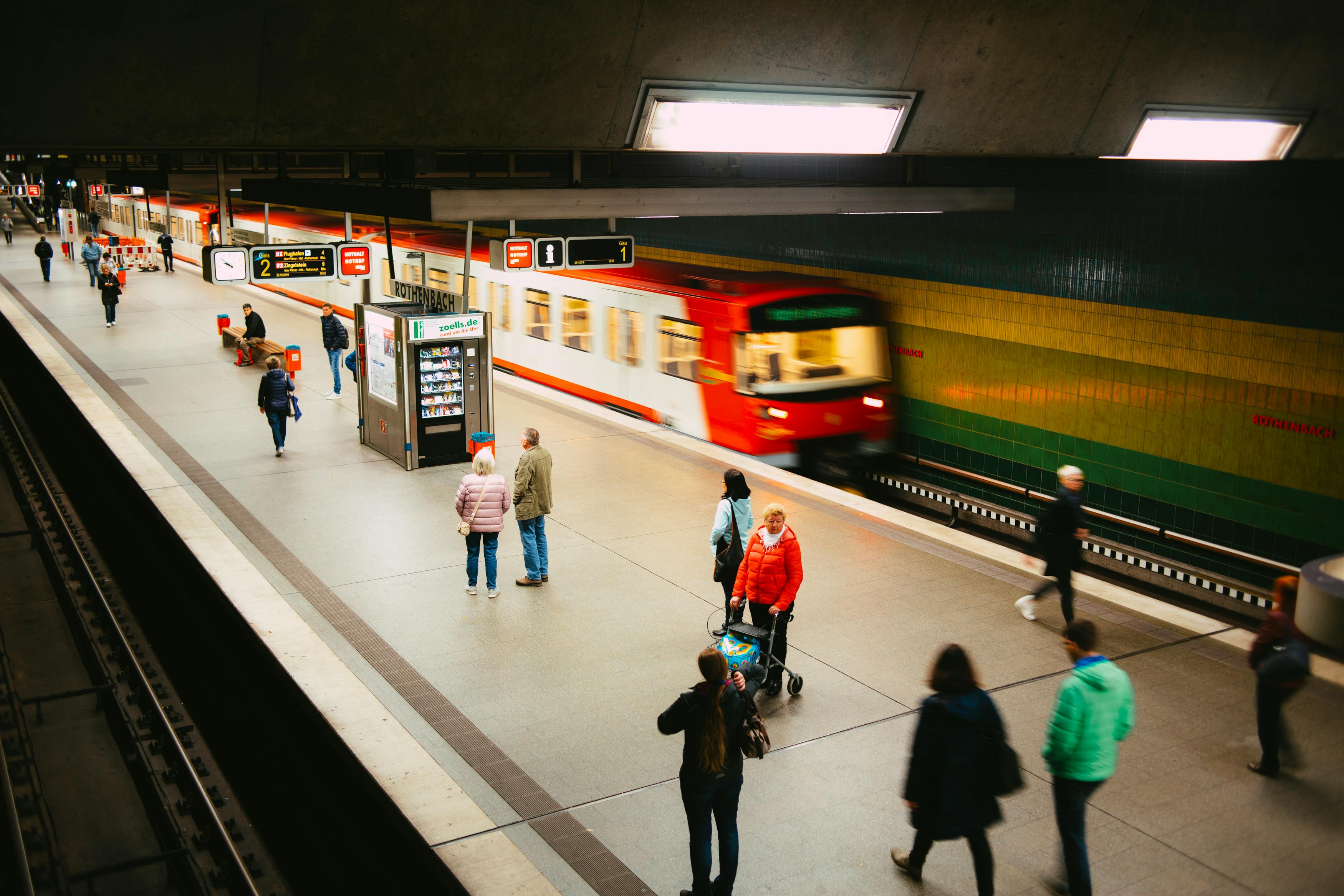
The Impact of OpenAI on Traffic Flow Prediction and Management
openai's impact on traffic flow prediction and management can be revolutionary. With the widespread use of machine learning algorithms and advanced data analysis techniques, OpenAI has the potential to transform how traffic is understood, predicted, and effectively managed.Traditionally, traffic flow prediction heavily relied on mathematical models and historical data. However, these methods often fell short in accurately interpreting complex patterns and adapting to dynamic changes in traffic conditions. OpenAI technologies can address these limitations by leveraging deep learning algorithms that analyze massive amounts of real-time data from various sources like sensors, traffic cameras, GPS devices, and social media.
A major advantage of OpenAI in traffic flow prediction is its ability to consider numerous factors simultaneously. It can account for not only historical traffic patterns but also day-of-week variations, special events, weather conditions, and road construction activities that impact traffic flow. By incorporating such dynamic elements into the models, AI-powered predictions can offer more reliable and accurate forecasts.
OpenAI also has the potential to enhance traffic management systems. Machine learning algorithms can learn from previous traffic incidents and their management approaches to recommend optimal routing strategies or suggest changes to traffic light timings. This could lead to improved efficiency, reduced congestion, and shorter travel times for commuters.
Furthermore, OpenAI's impact on traffic flow extends to autonomous vehicles. Self-driving cars rely on accurate real-time information about surrounding traffic conditions. With advanced AI algorithms and prediction models developed by OpenAI, these vehicles can navigate efficiently, make informed decisions, and avoid congested routes in real-time.
However, there are challenges associated with implementing OpenAI in traffic flow prediction and management. Firstly, collecting vast amounts of accurate and high-quality data presents a significant hurdle. Developing reliable data sources and ensuring data privacy must be addressed to generate meaningful insights.
Additionally, successfully integrating OpenAI into existing infrastructure requires collaboration among various stakeholders such as city authorities, transportation planners, engineers, and policymakers. A coordinated approach is necessary for effectively incorporating AI-based traffic management systems into real-world scenarios.
The impact of OpenAI on traffic flow prediction and management has the potential to reshape transportation ecosystems for both urban and rural areas. With improved accuracy in predictions, cities can optimize their infrastructure planning, reduce congestion, provide better transportation services, enhance public safety, and improve overall quality of life for the people relying on their road networks.
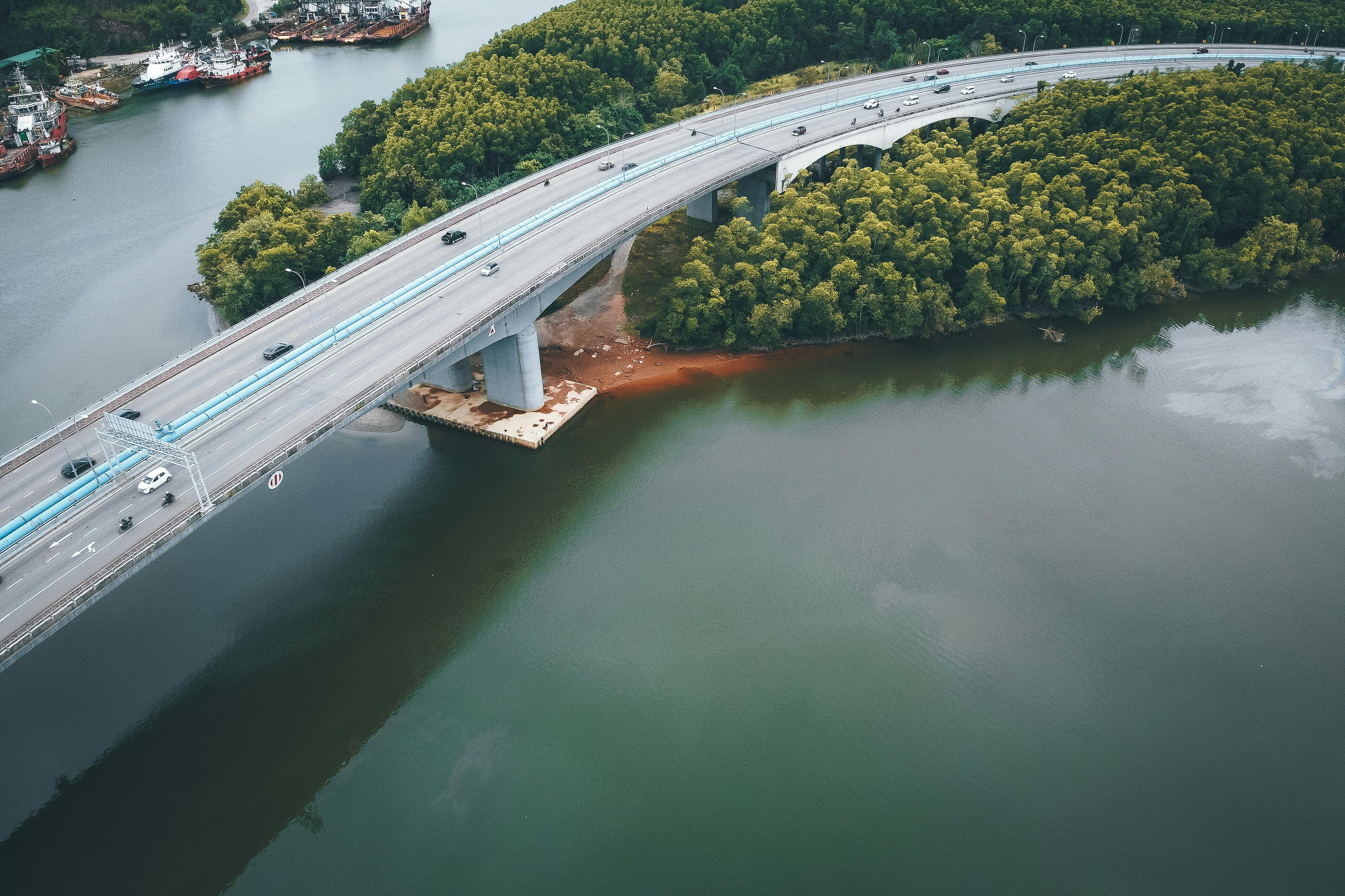
Collaborative Robotics and OpenAI: Transforming the Landscape of Urban Traffic
As urbanization continues to escalate and cities become more congested, finding efficient solutions for managing traffic is of paramount importance. With the advent of collaborative robotics and advancements in artificial intelligence (AI), openai - an innovative research organization - is at the forefront of transforming the landscape of urban traffic management.Collaborative robotics refers to the interaction and cooperation between humans and machines to achieve common goals. By integrating intelligent robotic systems with human operators, this emerging field aims to enhance productivity, safety, and efficiency across various domains. When applied to urban traffic, collaborative robotics strives to revolutionize the way cities manage their transportation networks effectively.
OpenAI plays a crucial role in realizing this transformation by harnessing the power of AI in combination with collaborative robotics. The primary objective is to create intelligent systems that can analyze, predict, and optimize traffic patterns dynamically. Through machine learning algorithms and predictive analytics, OpenAI technologies can process vast amounts of real-time data, offering valuable insights into traffic behavior and congestion points.
The integration of OpenAI and collaborative robotics offers numerous benefits that could reshape the urban traffic landscape. Firstly, it enables improved traffic flow management by intelligently monitoring vehicle movements and making real-time adjustments. By facilitating coordinated communication among traffic signals, connected vehicles, and roadside infrastructure, road congestion can be mitigated, leading to reduced travel time for commuters.
OpenAI's platform also paves the way for enhanced autonomous vehicle systems. Collaborative robotics combines AI-driven decision-making with advanced sensing capabilities, enabling vehicles to navigate complex traffic scenarios proactively. Self-driving cars can communicate with each other using OpenAI-powered systems to optimize speed, adapt lane positioning based on real-time conditions, and avoid accidents more efficiently.
Furthermore, OpenAI's transformative impact extends beyond individual vehicles. As collaborative robotics promotes integration between different modes of transportation like cars, buses, trams, or cyclists, traffic management techniques can be deployed across the entire urban network. By synchronizing public transportation vehicles, optimizing route planning, and dynamically adapting traffic signals, the overall efficiency of the transportation system improves dramatically.
With its extensive research contributions in machine learning, reinforcement learning, and probabilistic inference, OpenAI is at the forefront of revolutionizing urban traffic management. Collaborative robotics, powered by OpenAI technologies, promises to reshape the way cities think about congestion and transportation systems. By leveraging AI capabilities for real-time analysis and making effective traffic decisions, OpenAI envisions a future where urban traffic becomes more streamlined, safer, and sustainable - ultimately improving the quality of life for residents in bustling cities worldwide.
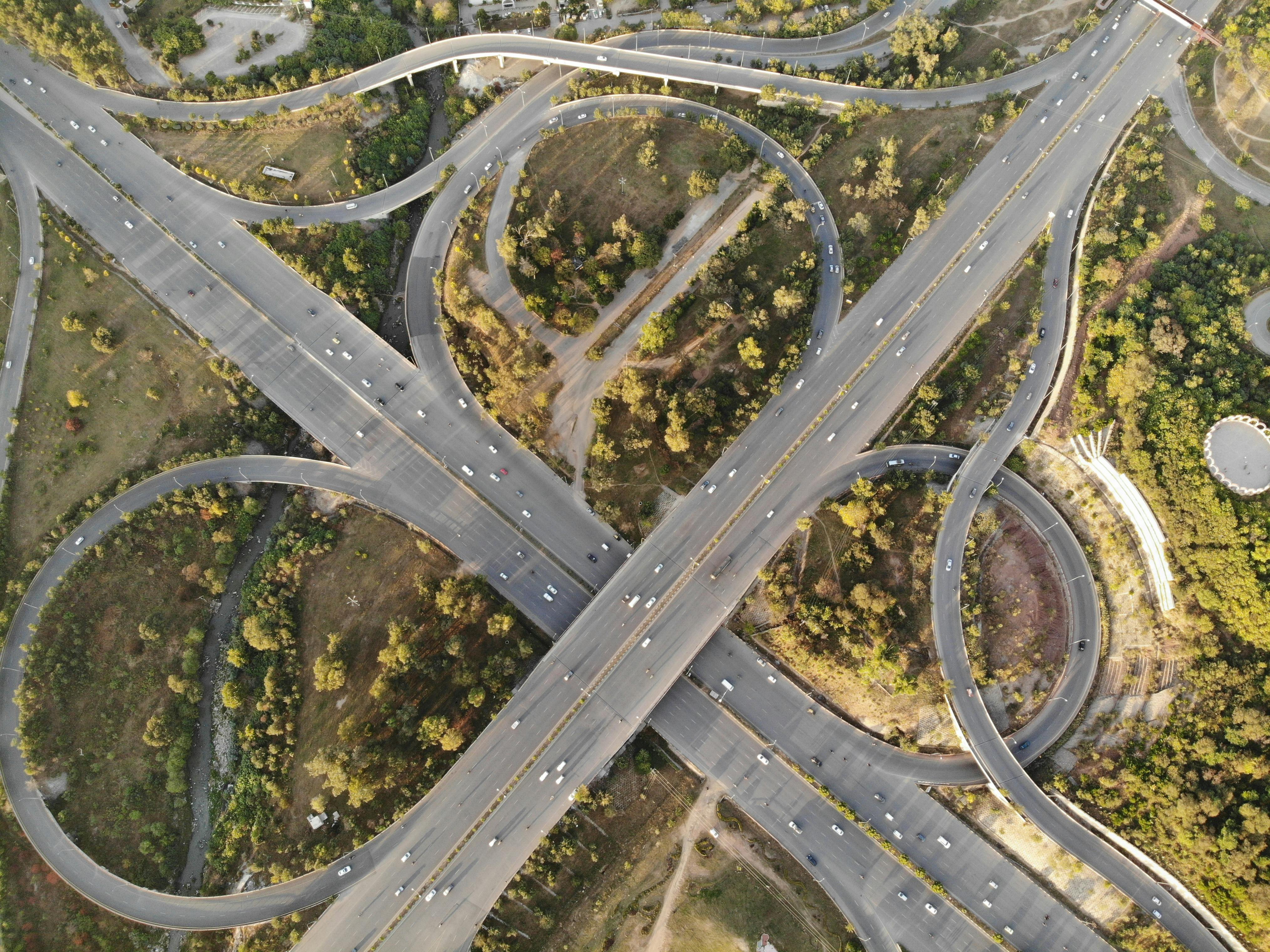
Breaking Down Barriers: The Accessibility Advantages of OpenAI in Traffic Systems
Introduction:
Accessible transport is fundamental for individuals with disabilities or limited mobility. However, traffic systems, particularly in urban areas, can pose significant challenges to ensure that everyone can move around safely and efficiently. Thankfully, openai has been actively utilizing its cutting-edge technology to break down barriers in traffic systems, resulting in enhanced accessibility for all.
Harnessing Artificial Intelligence:
OpenAI's innovative and advanced artificial intelligence (AI) algorithms are revolutionizing the way traffic systems can be designed and operated. By incorporating AI technology into various aspects of traffic management, OpenAI enables more intelligent decision-making processes, optimized resource allocation, and adaptive traffic control mechanisms.
Real-Time Traffic Management:
One of the key advantages of OpenAI in traffic systems lies in the ability to process an enormous amount of data in real-time. AI algorithms developed by OpenAI continuously analyze data from various sources such as traffic cameras, sensors, GPS data, and public transportation feeds. This enables traffic management authorities to better understand the ever-changing flow of traffic, including congestion patterns, accidents, roadworks, and other disruptive events.
Improved Safety Measures:
OpenAI's technologies bring a paradigm shift in ensuring safety within traffic systems. By analyzing vast amounts of data instantaneously, AI algorithms are capable of identifying potential hazards or dangerous situations much faster than traditional methods. This allows authorities to swiftly respond with appropriate safety measures such as activating warning signs, adjusting traffic flow, or notifying emergency services when needed. Consequently, accidents can be minimized and emergency response times significantly reduced.
Adaptive Traffic Control:
OpenAI excels in creating adaptive traffic control mechanisms that enable optimized utilization of existing infrastructure. Traditional traffic signal controllers operate on pre-programmed schedules that may not consider real-time traffic conditions. Contrastingly, using AI algorithms like those developed by OpenAI allows signals to dynamically adapt based on current demand and congestion levels. This results in improved traffic flow, reduced waiting times at intersections, and better overall travel experience for motorists, cyclists, and pedestrians alike.
Enhanced Public Transportation:
OpenAI's state-of-the-art AI technology is proving transformative in enhancing public transportation accessibility. By analyzing historical data, OpenAI algorithms can accurately predict demand patterns, optimize routes, and enhance scheduled services. This helps public transit agencies anticipate fluctuations in demand and optimize services accordingly. In turn, this caters to the needs of individuals with disabilities or limited mobility by ensuring that suitable and reliable transportation options are available when needed.
Promoting Sustainability:
OpenAI's interventions go beyond accessibility advantages alone; they also contribute to environmental sustainability. Intelligent traffic management facilitated by OpenAI helps reduce congestion and idle time, in turn minimizing fuel consumption and emissions from vehicles. Additionally, optimized public transportation routes promoted by OpenAI encourage greater usage of mass transit options, further decreasing carbon emissions.
Continual Iteration and Improvement:
OpenAI recognizes the dynamic nature of traffic systems and strives for continual iteration and improvement. Through testing and gathering user feedback, OpenAI ensures that its algorithms are robust, adaptable, and constantly evolving. This commitment to ongoing development enables OpenAI to overcome barriers efficiently while addressing emerging challenges in an ever-changing urban landscape.
Conclusion:
OpenAI's relentless pursuit of harnessing AI technologies within traffic systems serves as a driving force towards enhanced accessibility. Through real-time data analysis, adaptive traffic control mechanisms, and improved public transportation services, OpenAI helps bring about safer roads, reduced congestion, and efficient mobility for all individuals. As OpenAI continues to innovate and push boundaries, it is creating an inclusive future where transportation systems are open to everyone without the barriers that exist today.

Addressing the Learning Curve: Bridging the Gap Between OpenAI Technology and Traffic Personnel Training
The convergence of cutting-edge technology and traditional professions has the potential to revolutionize various sectors. One such blend lies in adopting openai technology to enhance traffic personnel training. This innovative approach, however, requires considerations aimed at addressing the learning curve associated with this transition.Traffic personnel play a crucial role in managing and ensuring smooth transportation flow. They regulate traffic, handle emergencies, and enforce road safety regulations. With OpenAI’s advanced tools, it becomes possible to develop simulations that replicate real-life traffic scenarios in a virtual environment.
Implementing OpenAI in traffic personnel training offers numerous benefits. Firstly, it allows trainees to learn through experiential learning rather than relying only on theoretical knowledge. Simulations utilizing OpenAI can provide interactive scenarios that expose trainees to real-world challenges they may encounter on the job.
Moreover, OpenAI technology's integration provides a safe environment for trainees to familiarize themselves with different scenarios without risking real-world consequences. Traffic accidents, complex junctions, or adverse weather can be simulated for trainees to cultivate their skills before confronting these challenges in actual fieldwork.
Nevertheless, several crucial considerations need attention when introducing OpenAI technology to traffic personnel training. Firstly, bridging the gap between instructors and trainees is essential. Experienced instructors must thoroughly understand OpenAI's capabilities and limitations to effectively guide trainees through simulations.
Additionally, customization of these simulations becomes essential when aiming to address specific regional or cultural aspects of traffic management. OpenAI's algorithms must be adapted to incorporate local realities, road conditions, traffic patterns, and other relevant factors unique to each region.
One key learning curve involves efficiently transitioning from simulation-based training to practical field experience. While simulated scenarios enable valuable learning opportunities, they do not fully replicate the unpredictability of real-world conditions. Care must be taken so that trainees don't become overly dependent on simulation tools and are adept at adapting their skills to unforeseen situations on the job.
Integration into existing training frameworks is another challenge. Introducing OpenAI technology should supplement existing training techniques and not replace them entirely. Combining traditional methods with AI-supported learning ensures a comprehensive approach that maximizes trainees' competence and preparedness.
Adapting computational models to handle different traffic demands is another consideration for effective use of OpenAI in traffic personnel training. Scaling simulations to replicate larger cities with complex traffic dynamics requires accommodating diverse elements such as pedestrian behavior, public transport patterns, and congested intersections.
Measurement of competency within OpenAI-driven training methodologies needs careful thought too. Developing appropriate metrics becomes necessary to evaluate trainees' skills and determine if they are sufficiently prepared before transitioning to fieldwork.
Addressing ethical aspects surrounding the implementation of OpenAI in this field is equally important. Ensuring data privacy, preventing bias in algorithms, maintaining transparency throughout decision-making processes are all concerns that need to be thoughtfully addressed to build trust in AI-based training systems.
In conclusion, blending OpenAI technology with traffic personnel training offers exciting possibilities for enhancing the effectiveness of training programs. However, addressing the learning curve associated with this transition is crucial. Through instructor expertise, customization, balancing simulated and real-world experiences, integrating with existing frameworks, adapting computational models, defining competency metrics, and prioritizing ethical considerations, we can bridge the gap between OpenAI technology and traffic personnel training successfully.

Analyzing Historical Data through OpenAI: Improvements in Traffic Planning and Infrastructure Design
In recent years, advancements in artificial intelligence and machine learning technologies have opened up new possibilities for analyzing historical data to improve traffic planning and infrastructure design. openai, a prominent player in the AI domain, has been at the forefront of these developments.One significant way OpenAI has contributed to this domain lies in the utilization of deep learning models to extract insights from massive amounts of historical data. By analyzing data from various sources such as transportation databases, surveys, satellite imagery, and social media platforms, it becomes possible to uncover patterns and trends that can inform decision-making processes associated with traffic planning and infrastructure design.
Historical data analysis using OpenAI's algorithms offers several benefits. Firstly, it allows planners and policymakers to identify recurring traffic issues and bottlenecks within urban areas or on specific routes. This information is invaluable for devising more effective traffic flow management strategies and suggesting alternative route options to alleviate congestion.
Furthermore, OpenAI's models can assess the impact of different variables on travel patterns. For instance, historical analysis might reveal the influence of weather conditions, events, or even local holidays on traffic congestion. These insights enable traffic planners to adjust their infrastructure designs accordingly or take preemptive measures to handle increased or decreased traffic volumes during specific periods.
Additionally, infrastructure design can be greatly enhanced by analyzing historical data through OpenAI. By reviewing past projects, including road expansion plans or construction of new routes, policymakers can evaluate the effectiveness of previous decisions and understand their long-term implications. This analysis helps identify potential improvements or modifications needed to align future projects with real-world traffic requirements.
Incorporating real-time data into historical analysis is another area where OpenAI plays a vital role. By considering dynamic factors like ongoing roadwork or accidents through real-time reports alongside historical information, AI algorithms can generate more accurate forecasts and recommendations for efficient infrastructure design planning.
To summarize, using OpenAI's cutting-edge technologies for analyzing historical data assists in revolutionizing traffic planning and infrastructure design. This approach allows us to uncover hidden patterns, predict future trends, understand the impact of various factors on traffic flows, improve decision-making processes for infrastructure projects, and ultimately reduce congestion and address transportation challenges of growing urban landscapes. OpenAI's continued advancements will undoubtedly contribute to better urban mobility management and sustainable infrastructural development.

Machine Learning and Traffic Signal Optimization: An OpenAI Application Case Study
Machine Learning (ML) and Traffic Signal Optimization have emerged as a promising combination when it comes to efficiently managing traffic flow in urban areas. openai, a leading artificial intelligence research organization, has been engaged in applying ML techniques to optimize traffic signal systems for improved transportation efficiency.In this case study, we delve into how ML can be utilized to revolutionize traffic signal optimization. Traditional traffic signal systems are often preprogrammed based on historical traffic patterns. However, this approach lacks the adaptability required to respond to real-time changes in traffic behavior. This is where ML comes into play—by enabling traffic signal systems to dynamically adjust timings based on current traffic conditions.
One essential component of ML-based traffic signal optimization is data collection. Sensor networks installed at intersections typically gather crucial information such as traffic volume, velocity, and occupancy. These data points act as inputs for ML models, enabling them to accurately capture the complex nature of urban traffic dynamics.
Once sufficient data is collected, ML algorithms are deployed to analyze and learn from the gathered information. These algorithms fall under various categories, including Deep Reinforcement Learning (DRL), Supervised Learning, or Unsupervised Learning. Each approach possesses its own advantages depending on the specific goals and context of the optimization process.
Deep Reinforcement Learning is widely utilized for traffic signal optimization due to its ability to create algorithms that can learn through a process of trial and error. By implementing reward-based systems, RL algorithms encourage optimal decision-making by maximizing positive outcomes. In the context of traffic signals, this means choosing time intervals that minimize overall travel time or reduce congestion levels.
During model training, RL algorithms interact with simulated traffic environments to identify optimal signal timings. The simulation environment provides a virtual world resembling complex road networks where these algorithms attempt various signal patterns while continuously evaluating their effectiveness against predefined objectives. By undergoing multiple iterations, the algorithms become progressively more adept at approximating coherent and efficient timing schemes.
Upon completion of the training process, the learned model is deployed in real-world traffic signal systems with necessary tuning and testing. During deployment, the ML model analyzes the incoming traffic data in real-time to dynamically adjust signal timings within predefined constraints. This constant adaptation enables traffic signals to react responsively, maximizing road capacity and minimizing delays during peak hours or unforeseen events.
The impact of applying ML to traffic signal optimization has proven remarkable. Studies have shown that ML-based optimization methods can significantly reduce travel times, cut emissions, and improve safety at intersections. Moreover, the adaptability and efficiency offered by automated traffic signal controls reduce manual intervention requirements, allowing transportation agencies to allocate their resources more effectively.
OpenAI's involvement in developing ML applications for traffic signal optimization showcases the potential of artificial intelligence in solving complex real-world problems. By harnessing machine learning techniques, traffic management systems can be advanced to enhance transportation experiences for urban communities while simultaneously alleviating environmental concerns associated with congestion and pollution.

Climate Action Heroes: How OpenAI Contributes to Reducing Vehicle Emissions Through Smarter Traffic Control
openai plays a significant role in tackling climate change by making significant contributions to reduc vehicle emissions through their innovative approach to smarter traffic control. This groundbreaking technology has the potential to make a substantial positive impact on our environment and move us closer to a sustainable future.Traditional traffic control systems often rely on predetermined algorithms that do not adapt well to real-time traffic situations. Such systems are unable to optimize road networks efficiently, leading to congestion, increased travel times, and ultimately, higher vehicle emissions. OpenAI recognizes these challenges and seeks to revolutionize urban transportation management using advanced machine learning techniques.
With OpenAI's cutting-edge advancements, real-time data collected from numerous sources, such as sensors, GPS devices, and cameras placed throughout road networks, forms the foundation of the smarter traffic control system. This constant stream of information allows AI algorithms to dynamically assess traffic conditions and make informed decisions promptly.
One of the key elements behind this innovative framework is reinforcement learning. OpenAI trains their artificial intelligence models using massive data sets obtained from various traffic scenarios. By exposing these models to an extensive range of situations associated with different levels of congestion, pedestrian movement patterns, and unforeseen events like accidents or roadwork, the AI becomes capable of learning optimal traffic management.
Through vast amounts of simulation and continuous learning cycles, OpenAI's models iteratively refine themselves to identify patterns and understand how different variables impact traffic flows. These smart algorithms embrace complexity and adapt their behavior by adjusting signal timing at intersections more appropriately.
The ultimate goal of OpenAI's smarter traffic control system is to mitigate congestion and subsequently reduce vehicle emissions significantly. By ensuring smoother traffflflffifiic movements and minimizing instances of unnecessary braking or idling, fuel consumption decreases, thereby reducing the release of greenhouse gases into the atmosphere.
In addition to reducing emissions, OpenAI's approach also optimizes travel times for commuters. The efficient use of road networks helps streamline traffic patterns and decrease the overall duration of journeys, alleviating frustration and stress among drivers. Shorter travel times encourage people to favor public transportation by making it a more convenient and time-saving option compared to using private vehicles.
OpenAI acknowledges that the success of smarter traffic control systems depends not only on advanced technology but also on collaboration with local authorities and transportation agencies. Together, they work towards implementing these solutions in real-world scenarios, thereby transforming the way cities manage their traffic networks.
In conclusion, OpenAI's efforts in creating a smarter traffic control framework demonstrate how artificial intelligence can be leveraged to reduce vehicle emissions and enhance sustainability. By optimizing road networks and facilitating smoother traffic flow through reinforcement learning algorithms, OpenAI plays a critical role in combating climate change while enhancing the overall efficiency of urban transportation systems.
